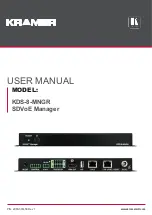
Hardware options installation 59
or 1066 MHz. The server supports a maximum system memory of 64 GB, using 4-GB, 8-GB, and 16-GB
UDIMMs.
Memory subsystem architecture
The memory subsystem in this server is divided into two channels. Each channel supports two DIMM
slots.
Channel
Population order
Slot number
1
C
A
1
2
2
D
B
3
4
DIMM slots are identified by number and by letter. Letters identify the population order. Slot numbers are
reported by ROM messages during boot and are used for error reporting.
For the DIMM slot locations, see "DIMM slot locations (on page
11
)."
Single-, dual-, and quad-rank DIMMs
To understand and configure memory protection modes properly, an understanding of single-, dual-, and
quad-rank DIMMs is helpful. Some DIMM configuration requirements are based on these classifications.
A single-rank DIMM has one set of memory chips that is accessed while writing to or reading from the
memory. A dual-rank DIMM is similar to having two single-rank DIMMs on the same module, with only one
rank accessible at a time. A quad-rank DIMM is, effectively, two dual-rank DIMMs on the same module.
Only one rank is accessible at a time. The server memory control subsystem selects the proper rank
within the DIMM when writing to or reading from the DIMM.
Dual- and quad-rank DIMMs provide the greatest capacity with the existing memory technology. For
example, if current DRAM technology supports 8-GB single-rank DIMMs, a dual-rank DIMM would be 16
GB, and a quad-rank DIMM would be 32 GB.
DIMM identification
To determine DIMM characteristics, use the label attached to the DIMM and the following illustration and
table.
Item Description
Definition
1
Capacity
4 GB
8 GB
















































